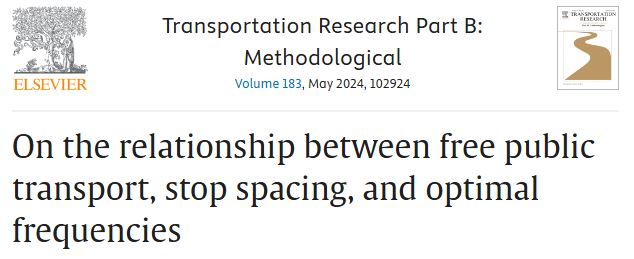Andrés Fielbaum
Abstract
Recent years have witnessed a reignition of the debate about free public transport, especially after a wider implementation due to the pandemic. However, most implementations have consisted of eliminating the fare without further structural adjustments, and one of the main reported concerns is that they seem to primarily attract commuters from active modes rather than car drivers. In this paper, we develop an analytical model to investigate how the design of a representative public transport line, situated in a corridor where it competes with both walking and cars, should be adjusted in response to fare reductions. We first conduct a detailed analysis of the effect of frequency and spacing on mode choice, showing that while increased frequencies attract both walkers and drivers, an increased spacing tends to attract long-distance commuters (often drivers) and discourage short-distance ones (which are more likely to walk). Hence, spacing can play a crucial role in inducing a desired mode choice.
Afterwards, we study the optimal response of public transport design under two possible objectives. If the aim is to minimise users’ plus operator’s costs in public transport, a decrease in the fare should be joined by an increased frequency and, potentially, a reduced spacing. If the objective is to induce a more sustainable mode split, the measures are the opposite: increase spacing and reduce frequencies. These divergent findings show that it is crucial to have a clear goal when reducing the fare, as no singular policy can achieve all of the objectives. We remark that an increased spacing and reduced frequency reduce the financial burden of the system, although it is most likely not enough to compensate for the loss of revenue when fares go free.
